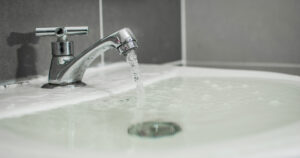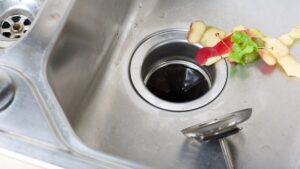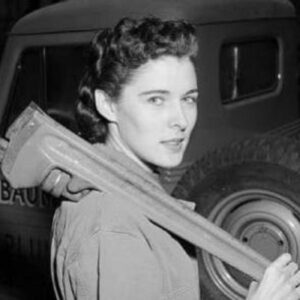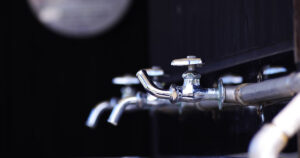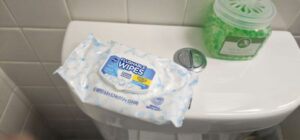
How to Diagnose and Fix Water Pressure Problems in Your Home
Water pressure issues can turn daily routines like showering, washing dishes, and doing laundry into frustrating tasks. Understanding how to tackle these problems can restore your home’s efficiency and comfort. This guide by Aaron Services: Plumbing, Heating, Cooling will walk you through diagnosing and fixing common pressure problems.
Understanding Dynamics of Water Pressure in Your Plumbing System
When water first enters your home from the main line at the street, it usually comes in at a higher pressure than your plumbing fixtures can safely handle. This high pressure helps the water travel throughout the neighborhood, but once it reaches your home, it needs to be brought down to a safe and manageable level. To achieve this, your home uses a pressure regulator, also known as a pressure reducing valve (PRV). This valve ensures your pressure stays at the right level, protecting faucets, pipes, appliances, and other fixtures from leaks, bursts, or premature wear. Regularly checking and maintaining your pressure regulator is a smart way to prevent plumbing problems and keep everything working smoothly.
The role of hydraulic force within your home’s plumbing network is pivotal, affecting everything from the invigorating efficiency of your showers to how well your washing machines and dishwashers perform. It’s the driving force that propels water through pipes, delivering it to your taps and appliances. A balanced hydraulic force, typically ranging from 40 to 60 psi, guarantees a consistent and reliable water flow, enhancing your daily routines.
Yet, when this balance is disturbed, noticeable disruptions can arise. Insufficient force diminishes the vigor of your showers and hampers the functionality of household appliances, extending operation times and reducing efficiency. Conversely, excessively high force places undue stress on your plumbing infrastructure, posing risks of damage to pipes, fixtures, and appliances, which could result in leaks or hastened deterioration.
Understanding the water pressure in your home helps you quickly spot and solve plumbing problems before they get worse. Keep an eye out for problematic symptoms, like dripping faucets, running toilets, or noises in your pipes or water heater. By knowing what to watch for, you can catch small issues early, saving yourself from bigger headaches down the road.
Common Causes of Low and High Water Pressure
Both low and high water pressure can disrupt daily life and signal underlying plumbing concerns. Here’s a closer look at what might be causing these variations and the symptoms to watch for.
Low Water Pressure
Low flow rate can turn simple tasks, like filling a kettle or taking a shower, into time-consuming chores. Several factors might be at play:
- Clogged Pipes: Over time, sediment, minerals, and debris can accumulate inside pipes, narrowing the passage for water flow. This buildup can significantly reduce water pressure to taps and appliances.
- Leaky Pipes: Even minor leaks can divert water flow away from its intended destination, lowering pressure. Leaks can be silent and hidden within walls or under floors, so regular inspections are vital.
- Municipal Water Supply Issues: Sometimes, the problem extends beyond your property line. Municipal supply issues, such as pipe maintenance or breaks in the main line, can temporarily affect water pressure.
- Symptoms to Notice: Water trickles instead of gushing from taps, appliances take longer to fill or operate, and shower pressure is insufficient for a comfortable rinse.
High Water Pressure
While low pressure is inconvenient, high pressure poses a risk to your plumbing infrastructure, potentially leading to costly repairs.
- Supply Source: High pressure often originates from the municipal supply, especially in areas situated at a lower elevation than the water source or main supply line.
- Thermal Expansion: As water heats in your water heater, it expands, increasing pressure in the system. This is more pronounced if your system lacks an expansion tank or if the tank is failing.
- Faulty Pressure Regulator: Homes with a pressure regulator installed to maintain a steady pressure can experience issues if the regulator malfunctions, allowing pressure to spike.
- Symptoms to Notice: Faucets emit a powerful, often noisy flow of water, appliances like washing machines and dishwashers show signs of stress or leaks, and you may frequently need to replace washers or fixtures due to wear.
Understanding these causes and recognizing the symptoms early on can save you from the inconvenience and expense of addressing the fallout from prolonged issues with water pressure. Regular maintenance and awareness are key to managing your home’s water pressure effectively.
How to Measure Your Home’s Water Pressure: A Step-by-Step Guide
Measuring your home’s water force is a straightforward process that can help you identify whether the pressure is within the optimal range for normal operation. Here’s how you can do it yourself:
- Gather Your Tools: You’ll need a water pressure gauge, which can be purchased at most hardware stores. Look for one that easily attaches to a hose bib and has a readable psi indicator.
- Find the Best Spigot: Choose an outdoor spigot close to where the main water line enters your home, typically near your water meter. This location gives the most accurate reading of your home’s pressure levels.
- Turn Off Appliances: Before taking a measurement, ensure all water-using appliances inside and outside your home are turned off. This includes washing machines, dishwashers, and sprinkler systems. Also, ensure no faucets are running.
- Attach the Pressure Gauge: Screw the pressure gauge onto the spigot’s threaded end. Make sure it’s tight enough to prevent water from leaking out during the test.
- Take the Reading: Turn the spigot on fully to get a clear reading on the gauge. Watch the needle move to stabilize at a number, which represents your water pressure in psi.
- Interpret the Results: A reading between 40 and 60 psi is considered ideal. If your pressure is below 40 psi, you’re experiencing low water pressure. Conversely, a reading above 60 psi indicates high water pressure, which may require adjustments or further inspection.
- Record Your Findings: It’s a good idea to keep a log of your water pressure readings. Repeated measurements over time can help identify trends or sudden changes in pressure.
When to Contact a Professional Plumber:
Checking the psi in a home’s plumbing can be a straightforward process for many property owners. However, making sense of what those readings imply and resolving any related concerns often necessitates the expertise of a seasoned plumber. If you notice any symptoms of high or low pressure, our team of professional plumbers is ready to help. We’re equipped to pinpoint the root cause of pressure issues, whether it’s an aging PRV or a leaking pipe. Stay on top of potential plumbing problems before they grow into major headaches; reach out to us for fast plumbing help.
Solutions to Restore Optimal Water Pressure
Restoring and maintaining optimal water supply pressure in your home involves identifying the root cause of the issue and applying the appropriate solution. Here are some practical steps for both low and high water pressure scenarios:
For Low Water Pressure
- Inspect and Clean Faucet Aerators and Showerheads: Mineral buildup can block the flow of water. Unscrew aerators and showerheads to clean them or soak in a vinegar solution to dissolve buildup.
- Check for Leaks in Your Plumbing System: Leaks can divert water away from where it’s needed, reducing pressure. Inspect visible pipes for signs of leakage and listen for the sound of running water in walls or floors. If you suspect a leak, contacting a professional plumber for detection and repair is crucial.
- Evaluate the Water Supply from Your Municipality: If you suspect the issue is not isolated to your home, check with neighbors to see if they’re experiencing similar problems. A reduction in municipal supply pressure can affect your home. Contact your water supplier for information or repairs.
For High Water Pressure
- Install a Pressure Reducing Valve (PRV): If your home doesn’t already have one, installing a PRV can significantly help in managing and reducing incoming water pressure to a safer, more manageable level.
- Regularly Test and Adjust Your PRV: Over time, a PRV can become less effective. Regular testing and adjustment, or replacement if necessary, can ensure it continues to regulate pressure effectively.
- Consider Expansion Tanks for Water Heaters: Thermal expansion in water heaters can cause pressure spikes. An expansion tank absorbs excess pressure, protecting your system.
When to Seek Professional Help
Some water pressure issues can be complex, involving the main supply line or requiring adjustments to installed pressure regulators. If you’ve tried basic troubleshooting without success, or if the problem is beyond your comfort level, it’s time to call in the experts. Professional plumbers have the tools and knowledge to diagnose and resolve water pressure issues accurately, ensuring your plumbing system is healthy and functional.
Preventative Measures and Regular Maintenance: Tips from Our Plumbers
Keeping your plumbing system in optimal condition and preventing water pressure issues doesn’t just happen by chance. It requires proactive measures and regular maintenance. Our experienced plumbers at Aaron Services: Plumbing, Heating, Cooling share their top tips to help you maintain the perfect balance in your home’s water pressure.
By following these expert tips and incorporating regular maintenance into your routine, you can significantly reduce the likelihood of facing water pressure issues in your home. Remember, the key to a healthy plumbing system is not just reacting to problems as they arise but taking steps to prevent them in the first place. For more detailed advice or to schedule an inspection, contact Aaron Services: Plumbing, Heating, Cooling. Our team is here to ensure your plumbing system remains in top condition.
Conclusion
Ensuring your home maintains balanced hydraulic force within its plumbing network is crucial for both its operational efficiency and structural integrity. By identifying the underlying reasons for fluctuations in your system’s flow rate, implementing appropriate corrections, and adhering to regular maintenance practices, you can sidestep both the hassles and the expenses associated with unnecessary repairs. While some issues can be rectified through do-it-yourself techniques, more intricate problems invariably necessitate the expertise of seasoned professionals.
Should you find yourself grappling with persistent issues related to your system’s hydraulic force, or if you’re uncertain about the best course of action, consider contacting Aaron Services: Plumbing, Heating, Cooling. Our experienced plumbers can thoroughly assess and remedy any concerns related to the flow rate in your plumbing, ensuring everything functions as intended. Whether you need standard upkeep or are facing urgent plumbing dilemmas, our team stands ready to assist you with top-tier service and effective solutions.
For expert advice, inspections, or immediate assistance, contact us today. Let Aaron Services be your go-to for maintaining optimal water pressure and a healthy plumbing system in your home.


